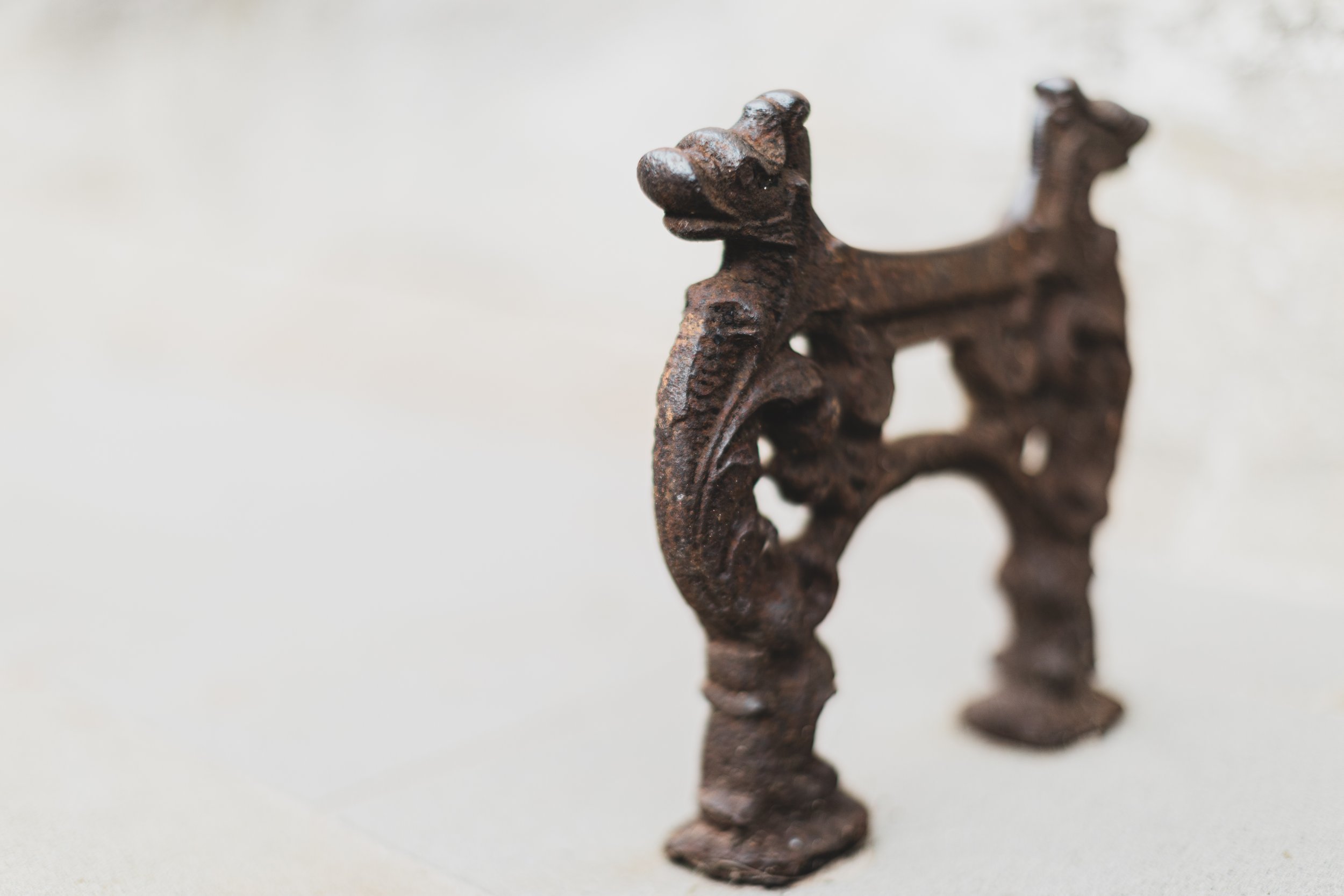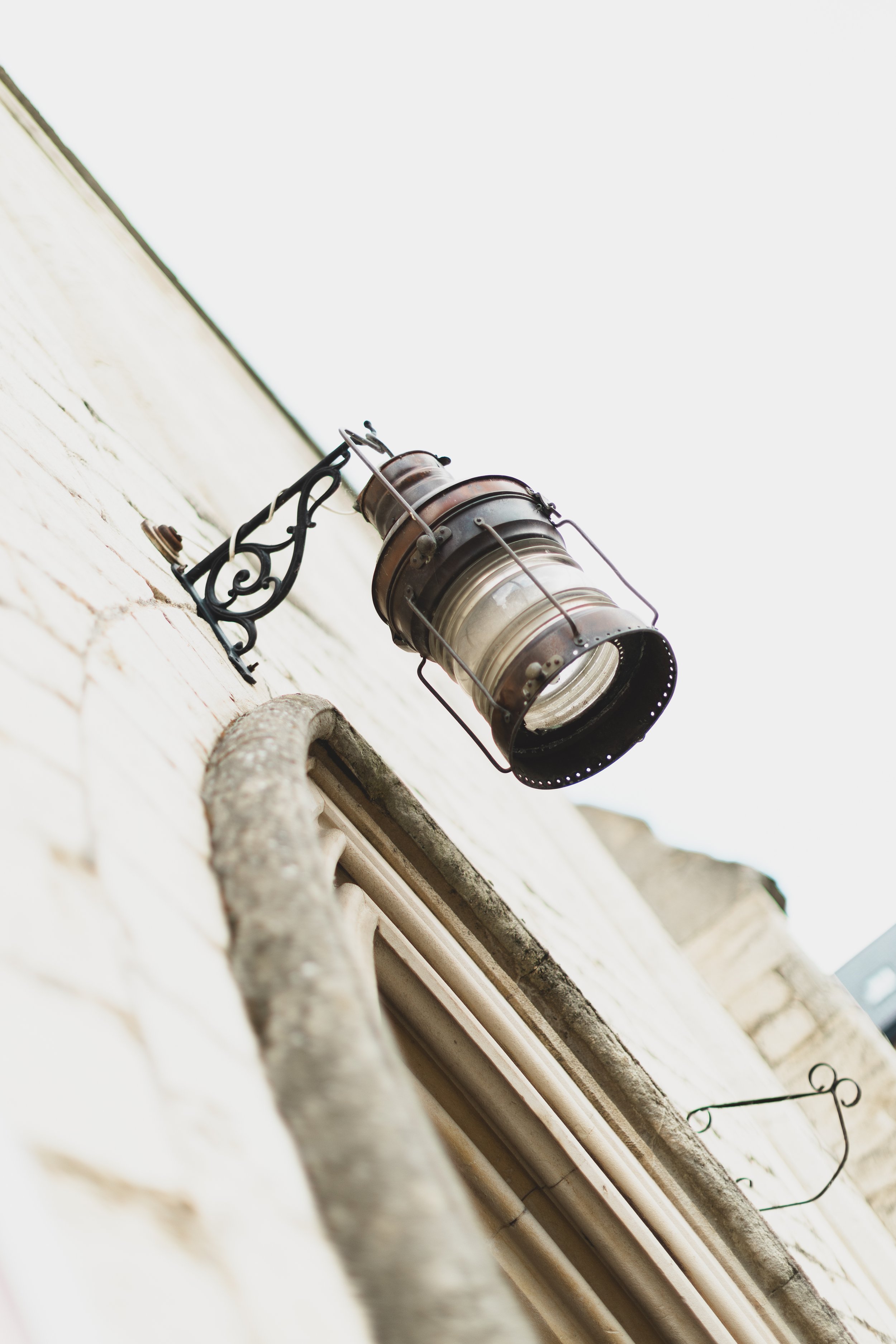
Artefact
Archive
A photographed collection of the artefacts
found in the Chapel.
Oak Tablets & Creed
These boards have been restored in more recent years but were very much part of the decoration of the Chapel in the 1900’s. The writing has been hand painted from what looks like the same signwriter due to consistency of the lettering.
Stained Glass WIndows
All the stained glass windows in the Chapel are not from the original building. When the old Saint Catherines church on London Road was demolished in the early 20th century, seven stained glass windows from the church were installed in Mariners. You can see three of them at the alter end of the pulpit and there are four others on the side walls of the chapel. In the 1990s five modern stained glass windows were created two of them celebrate the history of the chapel. One of the windows celebrates the life of an overseas missionary who was associated with and supported by the church and the final two have biblical themes.
The three windows together (located at the west end) depict some of the followers of Jesus. On the left is Peter, one of the twelve disciples, in the middle depicts John The Baptist and on the right is the apostle Paul. Their names are shown at the bottom of the stained glass. The windows were made by Clayton and Bell. The name
Peter is seen holding a key which is in reference to Matthew 619 where Jesus tells him that He would ‘give [him] the keys of the kingdom of heaven’. The scene below is a little less obvious but most likely refers to John 21:15 where Jesus asks Peter to ‘feed [his] lambs’.
John carries a banner “Ecce agnus dei” which means “Here is the Lamb of God”. He fulfilled prophecies from the old testament by telling people that Jesus was the Messiah. [John 1:9]. He also seems to be carrying a plate which could be in reference to Herod’s wife wanting his head on a plate [Matthew 14:8]. His beheading is shown in the scene below.
Paul is shown with a book in his right hand because he wrote much of the New Testament. The scene below him depicts the moment when he was blinded by a light while traveling to Damascus. Before he started following Jesus, Paul (who’s name was Saul before this event) was heavily involved in the persecution of Christians until one day Jesus appeared to him in a bright light and he was blinded. He regained his sight three days later and started following Jesus, a complete transformation from his previous life [Acts 9].
Abraham is a significant figure in the Old Testament and is seen in this window holding a knife and a bucket of fire which most likely is referring to a smoking pot of coal that would have been used to transport fire on the long journey to sacrifice his son. Firstly known as Abram, his name was later changed and carried the meaning of ‘Father of Many’. You can read more about Abraham in Genesis 12.
Issac was the son of Abraham and his wife Sarah. His name mean’s ‘He Laughs’ which carries significance because of the initial disbelief of his birth after years of being childless and Sarah was far beyond childbearing years. His story can be found in Genesis 21. He’s shown here with a shepherd crook which reflects his life as a nomadic farmer.
Jacob [later named Isreal] was the second twin son of Issac and Rebekah. The relationship with his brother was turbulent and at one point he found himself on the run. During this time he had a dream [Genesis 18:10] in which angels were climbing up and down a ladder between Heaven and Earth (hence the inclusion of the ladder in this window). His story starts at Genesis 25:19.
Joseph was one of Jacob’s twelve sons. It became obvious that Joseph was the favourite when he was gifted a beautiful garment to wear. His brothers ended up selling him into slavery which began a long journey to him becoming powerful in Egypt. In this artwork he is carrying a bundle of wheat and a sickle which refers to a dream he had which later is fulfilled when famine hits the land of Canaan. Joseph’s story begins in Genesis 37.
modern Glass WIndows
Gloucester Docks [Left]
Mariners Chapel [Right]
These were made by Gerald Paxton and show events in the chapel's early years.
Genesis [Left]
Revelation [Right]
These depict scenes from the first and last books of the bible. They were designed and made by Michelle Butler.
victorian floor tiles
Memorial Plaques
Chapel Interior
In this photograph you can see quite a bit of painting on the walls from the late Victorian period. Some of the Creedence boards still survive although they have been restored since this image was taken. You can also note from the Chapel that all the windows are plain glass this is what was originally built.
A trident can be seen on the right of the image above. This looks to have been painted onto the wall of the Chapel illuminating their space in the Marina and highlighting their roots in seafaring. These have long since been painted over so the full extent of the original decoration of the Chapel remains a mystery.
We think the pews, panelling, altar and the pulpit are all secondhand. It seems right from its inception Mariners Church has been self financing and regularly receiving of surplus items from other churches.
Re-created image 2025
Victorian wall pattern
Altar Detail
graphic signs
Ships Wheel
Geometric Artwork
This piece of artwork can be found underneath the central window at the front of the church.
Chapel Exterior
Victorian sea horse boot scrapers outside of the entrance.
Marine lamp hanging above the entrance door. This is not an original piece but from photographs it seems a light was positioned in this area before the current one.




































